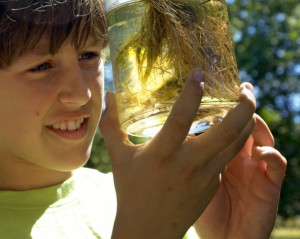
Two Ohio 4-H projects — one available now, the other in 2016, both based on hands-on learning — focus on water’s importance. (Photo: Digital Vision.)
Meera Nadathur, 15, wants to work in environmental sciences.
As a step toward that goal, the student at Cincinnati’s Sycamore High School last year completed Ohio 4-H’s Ways of Knowing Water project. It and some 200 other projects for Ohio 4-H members stress science and hands-on learning.
“One of my favorite experiences was visiting the Greater Cincinnati Water Works treatment plant to learn the entire drinking water purification process,” she said. “I was able to view every step of the process firsthand and gain knowledge about it from the very experts who ran the plant.”
A member of the Gorman Farm 4-H Club, Nadathur was one of the more than 200,000 youth ages 5-19 who participated in Ohio 4-H in 2014. Some 18,000 other Ohioans, including Nadathur’s club’s adviser, Cindy Capannari, helped as volunteers.
The organization, which is Ohio State University Extension’s youth development program, celebrated Ohio 4-H Week March 8-14. OSU Extension is the outreach arm of the College of Food, Agricultural, and Environmental Sciences at The Ohio State University.
Exploring water is especially timely given last year’s crisis in Toledo, said Joe Bonnell, OSU Extension’s program director for watershed management and one of the project’s developers. Last August, toxins from a Lake Erie algal bloom led that city to ban tap water use for three days.
Changes in climate, weather and land use, among other things, are more and more affecting Ohio’s rivers, lakes and streams, he said.
“I think the youth who complete this project will gain a greater appreciation for the value of water in their lives and communities, which hopefully will lead them to taking an active role in protecting their local water resources,” he said.



